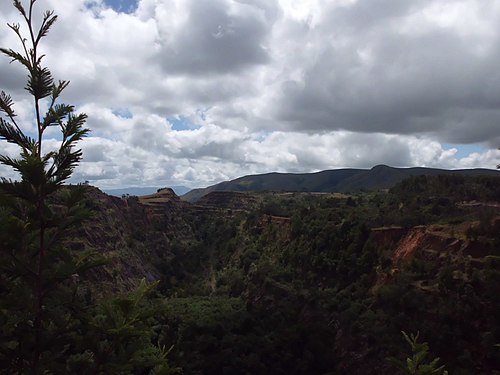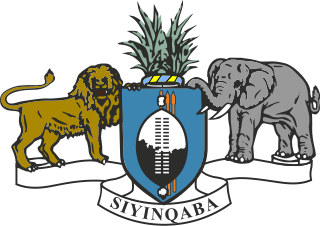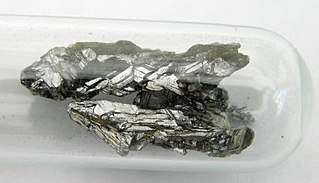
Hhohho is a region of Eswatini, located in the north western part of Eswatini from the north and running southwards to the centre, Hhohho was named after the capital of King Mswati II, who expanded the Swazi territory to the north and west, taking in the districts of Barberton, Nelspruit, Carolina and Piet Retief. These areas were later acquired by what was the Province of Transvaal and today they form part of the Mpumalanga Province of South Africa. It has an area of 3,625.17 km², a population of 320,651 (2017), and is divided into 14 tinkhundla. The administrative center is the national capital of Mbabane. It borders Lubombo Region on the southeast and Manzini Region in the southwest.

The Mining industry in India is a major economic activity which contributes significantly to the economy of India. The GDP contribution of the mining industry varies from 2.2% to 2.5% only but going by the GDP of the total industrial sector it contributes around 10% to 11%. Even mining done on small scale contributes 6% to the entire cost of mineral production. Indian mining industry provides job opportunities to around 700,000 individuals.
The mining of minerals in Nigeria accounts for only 0.3% of its GDP, due to the influence of its vast oil resources. The domestic mining industry is underdeveloped, leading to Nigeria having to import minerals that it could produce domestically, such as salt or iron ore. Rights to ownership of mineral resources is held by the Federal government of Nigeria, which grants titles to organizations to explore, mine, and sell mineral resources. Organized mining began in 1903 when the Mineral Survey of the Northern Protectorates was created by the British colonial government. A year later, the Mineral Survey of the Southern Protectorates was founded. By the 1940s, Nigeria was a major producer of tin, columbite, and coal. The discovery of oil in 1956 hurt the mineral extraction industries, as government and industry both began to focus on this new resource. The Nigerian Civil War in the late 1960s led many expatriate mining experts to leave the country. Mining regulation is handled by the Ministry of Solid Minerals Development, which oversees the management of all mineral resources. Mining law is codified in the Federal Minerals and Mining Act of 1999. Historically, Nigeria's mining industry was monopolized by state-owned public corporations. This led to a decline in productivity in almost all mineral industries. The Obasanjo administration began a process of selling off government-owned corporations to private investors in 1999.
The mineral industry of Russia is one of the world's leading mineral industries and accounts for a large percentage of the Commonwealth of Independent States' production of a range of mineral products, including metals, industrial minerals, and mineral fuels. In 2005, Russia ranked among the leading world producers or was a significant producer of a vast range of mineral commodities, including aluminum, arsenic, cement, copper, magnesium compounds and metals, nitrogen, palladium, silicon, nickel and vanadium.

The following outline is provided as an overview of and topical guide to mining:

Mining in the United Kingdom produces a wide variety of fossil fuels, metals, and industrial minerals due to its complex geology. In 2013, there were over 2,000 active mines, quarries, and offshore drilling sites on the continental land mass of the United Kingdom producing £34bn of minerals and employing 36,000 people.
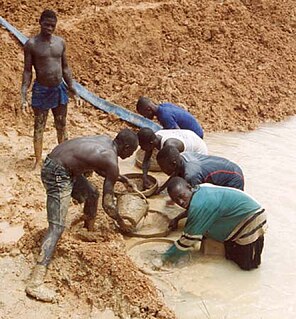
The mining industry of Sierra Leone accounted for 4.5 percent of the country's GDP in 2007 and minerals made up 79 percent of total export revenue with diamonds accounting for 46 percent of export revenue in 2008. The main minerals mined in Sierra Leone are diamonds, rutile, bauxite, gold, iron and limonite.

Oil and gas dominate the extraction industries of the Republic of the Congo, also referred to as Congo-Brazzaville. The petroleum industry accounted for 89% of the country’s exports in 2010. Among African crude oil producers in 2010, The Congo ranked seventh. Nearly all of the country's hydrocarbons were produced off-shore. The minerals sector is administered by the Department of Mines and Geology. Presently no major mining activities are underway, although there are some small-scale domestic operations. However, the country does have numerous large-scale undeveloped resources. The country has recently attracted a strong influx of international companies seeking to tap into the vast mineral wealth.
Mining in North Korea is important to the country's economy. North Korea is naturally abundant in metals such as magnesite, zinc, tungsten, and iron; with magnesite resources of 6 billion tonnes, particularly in the Hamgyeong-do and Jagang-do provinces. However, often these cannot be mined due to the acute shortage of electricity in the country, as well as the lack of proper tools to mine these materials and an antiquated industrial base. Coal, iron ore, limestone, and magnesite deposits are larger than other mineral commodities. Mining joint ventures with other countries include China, Canada, Egypt, and South Korea.
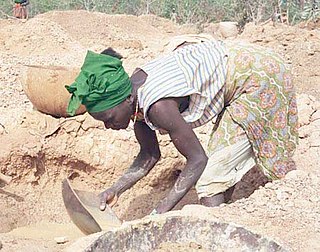
The mining industry of Guinea was developed during colonial rule. The minerals extracted consisted of iron, gold, diamond, and bauxite. Guinea ranks first in the world in bauxite reserves and 6th in the extraction of high-grade bauxite, the aluminium ore. The mining industry and exports of mining products accounted for 17% of Guinea’s gross domestic product (GDP) in 2010. Mining accounts for over 50% of its exports. The country accounts for 94% of Africa’s mining production of bauxite. The large mineral reserve, which has mostly remained untapped, is of immense interest for international firms.
The mining industry of Lesotho is mostly concentrated on diamond mining and as such the mining sector in the country has not played any significant role in furthering its economy. Apart from diamonds, the country's main mineral resources have been identified as base metals, clays, dimension stone, sand, gravel and uranium. The lack of initiative to extract other minerals commercially is mainly attributed to the inadequacy of infrastructure and finances. Between 2000 and 2011, the percentage of GDP contributed by diamond mining to Lesotho's economy rose from "virtually zero" to about 4%.

The mining industry of Uganda, documented as early as the 1920s, witnessed a boom in the 1950s with a record 30 percent of the country's exports. It received a further boost when mining revenues increased by 48 percent between 1995 and 1997. However, the World Bank reported that the sector's contribution to gross domestic product (GDP) dropped from 6 percent during the 1970s to below 0.5 percent in 2010. Uganda's extractive industry activities have been identified by the Natural Resource Governance Institute as focused on "extraction of cobalt, gold, copper, iron ore, tungsten, steel, tin and other industrial products such as cement, diamonds, salt and vermiculite". Limestone is sold in local markets whereas gold, tin, and tungsten are major exports.

The mining industry of Libya does not contribute significantly to its economy. Mining resources are located in remote regions with limited accessibility. The fuel sector, including oil reserves and natural gas is the major revenue-generating industry.
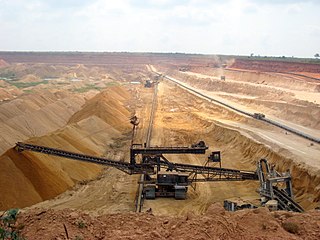
The mining industry of Togo is centred mainly around the extraction of phosphate, ranking it 19th in world production. Other minerals extracted are diamond, gold, and limestone. More minerals identified but yet to be brought into production mode are manganese, bauxite, gypsum, iron ore, marble, rutile, and zinc. The mineral sector contributes 2.8% to the country's gross domestic product (GDP).

The mining industry of Liberia has witnessed a revival after the civil war which ended in 2003. Gold, diamonds, and iron ore form the core minerals of the mining sector with a new Mineral Development Policy and Mining Code being put in place to attract foreign investments. In 2013, the mineral sector accounted for 11% of GDP in the country and the World Bank has projected a further increase in the sector by 2017.

The mining industry of Mali is dominated by gold extraction which has given it the ranking as the third largest in Africa. Artisanal miners play a large part in the mining of diamonds. The other minerals extracted are rock salt and semiprecious stones. Phosphates are mined in the Tilemsi Valley. In 2013, gold exports were of the order of 67.4 tonnes, nearly a 50% increase over the production in 2012 which is attributed mainly to the contribution of 20.7 tonnes made by artisanal mining. Gold, followed by cotton, is the top export item making a large contribution to the economy of the country.
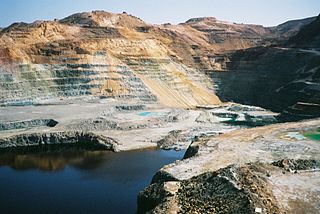
The Mining industry of Cyprus is synonymous with copper extraction which began around 4,000 BC. Copper dominates the mining sector along with mining of iron pyrite, gold, chromites and asbestos fibers, bentonite, cement, and also petroleum. Though at one time, copper was a mainstay of the economy, as of 2012, the mining sector does not contribute in a significant way to the GNP.

The mining industry of Yemen is at present dominated by fossil mineral of petroleum and liquefied natural gas (LNG), and to a limited extent by extraction of dimension stone, gypsum, and refined petroleum. Reserves of metals like cobalt, copper, gold, iron ore, nickel, niobium, platinum-group metals, silver, tantalum, and zinc are awaiting exploration. Industrial minerals with identified reserves include black sands with ilmenite, monazite, rutile, and zirconium, celestine, clays, dimension stone, dolomite, feldspar, fluorite, gypsum, limestone, magnesite, perlite, pure limestone, quartz, salt, sandstone, scoria, talc, and zeolites; some of these are under exploitation.
